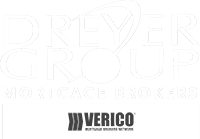Simplifying The Mortgage Process
Zach Silverman | November 22, 2023
Buying a home is a big step, and thoughtful consideration is the key to finding your perfect haven. Buying a home is one of the most important financial decisions you’ll make in your life.
While it might seem like the best place to start the home buying process is to browse MLS on your phone and then contact a Realtor to go out and look at properties, it’s not. Here are some simple steps to your homeownership prep to ensure a seamless home-buying journey.
Financial Readiness - Prequalifying for Mortgage.
Unless you have enough money in the bank to buy a home with cash, you’re going to need a mortgage. Mortgage financing can be challenging and not so straightforward, the best time to start planning for a mortgage is right now.
Don’t make another move until you discuss your financial situation with an independent mortgage professional. It’s never too early to start planning. When you work with an independent mortgage professional, instead of working with a single bank, you’ll be working with someone who has YOUR best interest in mind and can present you with mortgage options from several financial institutions.
As part of your mortgage plan, you’ll want to figure out what you can afford BEFORE you start shopping. This is where an independent mortgage professional comes in. At Silverman Mortgage Group, we will gather your information by way of an application and documentation, assess your credit score, review your overall financial scenario and ensure you pre-qualify.
As part of preparing you in advance, we will put together a full report of your affordability, calculated mortgage payments, and have a clear picture of exactly how much money is required for a down-payment and estimated closing costs. We will also include various mortgage products available on the market, considering different mortgage terms, types, amortizations, and features. Our job is to help you strategize the best option for your homeownership goal and financial wellnes..
Once you have your numbers in place, you can shop confidently!
You've found a property!
When you’ve found a property to purchase and have your purchase agreement in place with the help of your realtor, you’ll work very closely with your mortgage professional to arrange your mortgage financing. This is where being prepared pays off.
Once you have a confirmed lender approval in place you'll receive a mortgage commitment accepting the lenders terms. This is the time where you'll finalize any last conditions (such as any additional documentation or property appraisals) to satisfy the lender agreement.
Don’t change anything about your financial situation until you have the keys.
Don’t quit your job, don’t take out a new loan, or don’t make a large withdrawal from your bank account. Put your life into a holding pattern until you take possession of your new home.
Close the deal.
The closing process involves signing the final mortgage agreement, transferring ownership, and paying closing costs. Your lender will provide the funds for the purchase, and you'll officially become a homeowner.
After closing, you'll start making regular mortgage payments according to the terms of your loan. Stay on top of your payments to maintain a good credit history and gradually build equity in your home.
Throughout the mortgage process, communication is key. Stay in close contact with your real estate agent, your independent mortgage professional, lender, and lawyer to ensure a smooth and well-coordinated experience. Each step plays a crucial role in securing your dream home, so take the time to understand the process and ask questions along the way.
If you’d like to discuss your personal financial situation and find the best mortgage product for you, our team here at Silverman Mortgage Group is happy to help! We can figure out a plan to buy a home as stress-free as possible.
Please connect anytime; it would be a pleasure to work with you.





